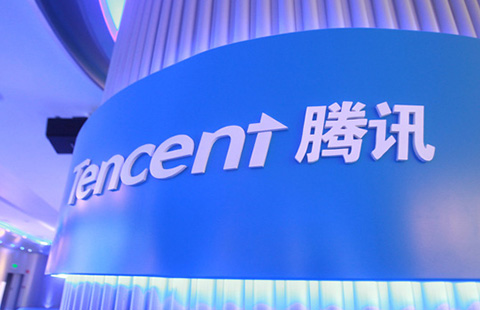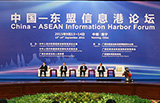Economic growth still within reasonable range
By Wang Bao'an (chinadaily.com.cn) Updated: 2015-09-30 17:57
 |
|
Wang Bao'an, director of the National Bureau of Statistics [Photo/IC] |
Recovery of world's economy remains uncertain, as global stock markets, foreign exchanges and commodities markets perform with great volatility. Faced with such new situations, the State Council has remained unwavering in taking initiatives, promoting macro-management, deepening reform and encouraging mass entrepreneurship and innovation. China has been tackling risks and challenges effectively, ensuring stable growth which restores the faith and hope of many on global economic recovery.
Growth still within reasonable range
Despite downward pressures at home and overseas, China maintains stable growth without aggressive stimulus measures, while adjusting economic structure, deepening reforms, improving people's well-being and forestalling risks. Policy effects are starting to show. The fact that China's economy is still fundamentally stable and grows within the reasonable range hasn't changed.
First, industrial production has remained stable. Added value of industries above a designated scale increased by 6.3 percent year-on-year in the first eight months, in line with the performance in the first half year.
Second, consumption grew steadily. Retail sales of consumer goods rose 10.5 percent in the first eight months, outpacing the first half-year growth by 0.1 percentage point.
Third, home sales continued to recover. Home sales by floor area increased 7.2 percent, 3.3 percentage points higher than the first six months, while sales value jumped 15.3 percent, 5.3 percentage points higher.
Fourth, employment remained stable. China created 7.18 million new jobs in urban areas in the first half year, fulfilling the full-year target by 71.8 percent. The unemployment rate, based on a survey conducted in 31 cities, stabilized at 5.1 percent.
Fifth, price gauge increased mildly. The consumer price index rose 1.4 percent year-on-year in the first eight months, 0.1 percentage point higher than the first half year.
Sixth, service sectors maintained good momentum. The flash service industry production index reached 8.2 percent, 1.9 percentage points higher than the added value growth of industries above a designated scale.
Under stable economic conditions, China has been accelerating structural adjustments and industrial transformation, while forming new growth engines. First, China's economy has been accelerating its shift into service-sector driven. The added value of the tertiary industry grew 8.4 percent in the first half year, accounting for 49.5 percent of the GDP, which eclipsed the share of the secondary industry by 5.8 percentage points.
Second, consumption contributed a significantly larger share to economic growth, accounting for 60 percent of GDP growth in the first half of this year, an increase of 5.7 percentage points.
Third, progress has been made on energy saving. Clean energy accounted for 17.1 percent of the total consumption in the first half year, increasing by 1.6 percentage points, while energy consumption per unit of GDP dropped 5.9 percent year-on-year.
Fourth, new industrial production is on the rise. Added value of high-tech products rose 10.4 percent in the first eight months, outpacing such of industries above a designated scale by 4.1 percentage points. Tourism and social consumption related sectors are on a fast track. Online retail sales jumped 35.6 percent in the first eight months, 25.1 percentage points higher than total social retail sales.
Fifth, non-public sectors have unleashed vitality. Added value of non-public sectors above a designated scale grew 8.1 percent in the first eight months, 1.8 percentage point higher than the average. Private investments surged 11 percent, accounting for 65 percent of the total investment.
Sixth, mass entrepreneurship and innovation maintained good momentum. The number of newly registered companies increased 19.4 percent in the first half year, with the registered capital jumping by 43 percent. There were about 10,000 new companies registered on an average day in July and August.
Therefore, China's economy has remained stable with positive growth under the New Normal and is heading toward the annual target as expected.
China still the global economic powerhouse
The Chinese economy maintains steady and rapid development amid increasing downward pressure, due to the country's economic transformation and industrial structural adjustment in recent years, contributing greatly to world economic recovery and making the country an important engine for the global economic growth.
As the biggest contributor to global economic growth, China's annual real GDP growth averaged 8.7 percent from 2009 to 2014, much higher than the world's annual average of 2.0 percent during the same period. Meanwhile, China's contribution to the world economy was more than 30 percent, higher than the 18 percent of the United States. After entering the "new normal" with slower but sustainable growth, China still remains one of the fastest growing economies in the world, accounting for 13.3 percent of world growth in 2014, up 4.1 percent from 2010. Its contribution to the global economy stood at around 30 percent in the first half of this year.
Imports remain stable, with slight progress. As the biggest manufacturer and consumer in the world, China has great demand for imports. In recent years, the quantity of goods imported has been increasing under a more positive policy, though import value decreased on falling commodity prices. During the first eight months, the import of food, copper ore and concentrates, and crude oil rose respectively 24.4 percent, 12.2 percent and 9.8 percent year-on-year.
China remains the main exporter to Latin American and African countries. In 2014, imports from Asia, Africa and Latin America accounted for more than 60 percent of China's total imports, and nearly 20 percent of the total exports of those countries.
China's outbound tourists and spending increased rapidly as their incomes rise. In 2014, the country's per capita GDP reached $7,591, that of seven provinces and municipalities including Beijing, Shanghai and Tianjin all higher than $10,000. Outbound trips reached 100 million in 2014, and rose 16 percent year-on-year in the first half this year.
The heated outbound tourism largely boosts economic growth in relevant countries, as Chinese tourists spend most during overseas trips worldwide. Last year, total overseas consumption surged nearly 30 percent year-on-year to exceed 1 trillion yuan in 2014, accounting for 11 percent of the global tourism income and topping the world for a third consecutive year.
The country's foreign direct investment (FDI) is accelerating, bucking the global trend as the US dollar appreciates, global capital flows back and investment revenues fall sharply. In 2014, China's FDI hit a record $123.1 billion, up 14.2 percent year-on-year, ranking the third globally for the third consecutive year. In the first eight months of 2015, non-financial FDI registered $77 billion, up 18.2 percent year-on-year, mainly in Latin America, Africa and Asia that plays an important role in boosting local economies.
Meanwhile, China actively implements the "One Belt, One Road" initiative to achieve mutual benefits and win-win cooperation with more than 60 countries and regions along the roads, where China directly invested $13.7 billion in 2014. In the first eight months of this year, FDI totaled $10.7 billion, up 48.2 percent year-on-year, and newly-signed deals of projects worth $54.4 billion, up 33 percent year-on-year, contributing significantly to stabilizing the international investment environment and boosting the economic development in those countries.
However, the Chinese economy suffers a lot from the deep readjustment of the world economy due to reduced demand for Chinese goods, deflation of international commodities and the quantitative easing policies of several countries.
The Baltic Dry Index, a leading indicator of future economic growth or contraction, has fluctuated between 500 and 1200 this year, lower than the trade balance point of 2000. The index has been below the 2000 level for many years.
Under such circumstances, each country has been making efforts to protect its domestic markets. Protectionism cases against Chinese companies have been on the rise, which led to a sharp slump in China's export growth. The country's exports, denominated in yuan, averaged a 7.7 percent yearly growth rate between 2011 and 2014, 16.5 percentage points lower than that during 2002-2008, but dropped 1.6 percent year-on-year in the first eight months of this year.
International commodity prices have been falling for three-and-a-half years, leading to imported deflation pressures faced by China. Average prices of imported goods in the first eight months fell 11.3 percent. Prices of crude oil, of which China imports much, has slid from $100 a barrel in 2014 to $50 a barrel. The price of iron ore has also dropped from $130 a ton to $60 a ton. Soybeans have decreased from $600 a ton in 2012 to $400 a ton. A primary calculation shows a third of the fall of China's Producer Price Index is a result of price drops of imported goods, while prices of China's exports fell only 1.4 percent during the same period.
Hence, China did not "export" deflation; rather, the country actually "imported" deflation.
As many developed countries such as the United States, Japan and Europe have quantitative polices, the Chinese economy has been suffering from passive appreciation. Due to anticipation that the Federal Reserve would increase interest rates, capital outflow from developing countries has been increasing. Under this influence, currencies of these countries have depreciated. As a result, the renminbi has appreciated. According to calculations by the Bank for International Settlements, the renminbi has appreciated 17.3 percent against the euro, and 9.6 percent against the Japanese yen, between January 2014 and August this year.
The renminbi appreciation has reduced the competitiveness of Chinese goods and is the main reason for the slump in Chinese exports.
Economic structure adjustment to contribute to the global economic recovery
The financial crisis pushed the world to reconsider growth patterns, and structural adjustment has become a global trend. The US and UK have announced reindustrialization strategies, while the European Union and Japan have also launched powerful policies to boost the manufacturing sector and developing countries including India, Mexico and Vietnam have accelerated the process of economic structure adjustment and industry upgrades.
In a time of in-depth adjustment, China's economy has come to a key moment for upgrading and promoting such strategic adjustment has become a universal consensus.
To further promote the structural adjustment in China will not only lay a solid foundation for the country's sustainable growth, but also contribute to the rebalancing and recovery of world's economy.
First, comprehensively building a well-off society in China will provide a larger consumer market for the world. As the nation with a 1.3 billion population enters into a well-off living standard especially when 300 million of them become middle-class, the consumption concept among Chinese have gradually transferred from basic living demands to leisure, elderly-care, education and communication.
Measured at current price levels, as of 2025, China's consumption expenditure will exceed $10 trillion. Overseas consumer goods manufacturers will also benefit from the growth.
Secondly, the upgrading of industry will stimulate the import of technologies and equipment. During the transformation from a manufacturer of quantity to one of quality, the demand for importing new technologies and high-end equipment and components will increase and the rapid growth of China's service sector will also provide more opportunities for its global trade partners.
If we maintain the trend over the next 10 years the scale of China's service sector will exceed $12 trillion by 2025.
From January to July, the proportion of service investment in overall foreign direct investment in China grew to 19.6 percent.
Third, international cooperation in production capacity offers more opportunities for joint ventures and could be a new driver of global economy. China has edges on highly cost-effective middle-end equipment capacity, comprehensive facilities and engineering construction, which with adequate foreign reserves could serve to bridge the gap between countries at various stages of development by helping break the bottle-neck hindering expansion, channel supply and demand, and fully utilize advanced equipment and technologies as well as rich natural resources and low labor costs.
China will usher in a new era of development that is more stable and sustainable with better quality in the foreseeable future when the country succeeds in shifting from an economy driven by investment and manufacturing to one led by consumption and services.
China has been and will be the engine powering the world economy, not the source of deflation or recession nor the threat to the world as it was once widely claimed. We are in the same boat in this globalized world to jointly face up to challenges of fading growth and sluggish recovery and pull the global economy back on track. China is determined and confident to achieve the dual objectives of maintaining a medium-high rate of growth and moving toward a medium-high level of development, and join world efforts to boost a sound and balanced global development.
The author is the director of the National Bureau of Statistics.
- China to invest $30b in intelligent transportation industry
- China plays key role in promoting South-South cooperation: UN official
- Cross-Border Interbank Payment System launched in Shanghai
- Fashion brands get makeover in China
- AIIB to invest in Pakistan's infrastructure development
- Online sales of luxury goods growing at healthy pace, says study
- Robots can help axe bad jobs, create more good jobs
- Golden Week loses its glitter in Hong Kong
















